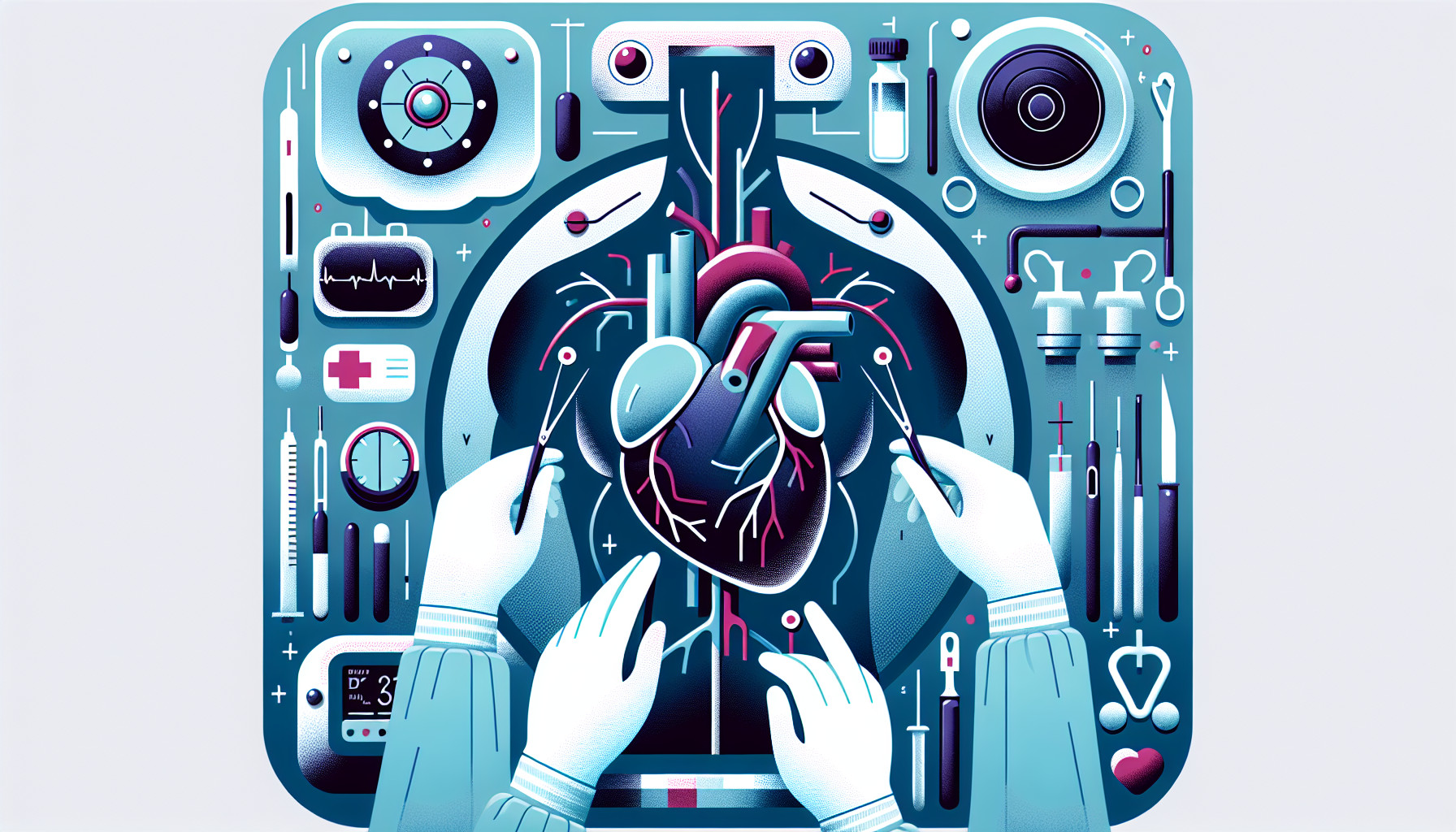Our Summary
This research paper discusses a medical procedure known as off-pump coronary artery bypass grafting (CABG). This procedure is done to help people with blocked heart arteries, and it’s done without stopping the heart and using a heart-lung machine, which is why it’s called “off-pump.”
However, the study finds that off-pump CABG might not be as effective as its counterpart, on-pump CABG, where the heart is temporarily stopped and a heart-lung machine is used. The off-pump method can lead to higher chances of needing another procedure, and it may not provide as complete a solution for blocked arteries.
Furthermore, despite the belief that off-pump CABG may protect patients from potential brain and kidney damage more than on-pump CABG, the research did not find evidence to support this. Rates of stroke and kidney failure were similar with both methods.
The paper also points out that off-pump CABG is technically more challenging to perform, leading to a steep learning curve for surgeons. The procedure’s effectiveness also greatly depends on the surgeon’s and medical center’s experience.
In terms of costs, although off-pump CABG could theoretically be cheaper by avoiding the use of a heart-lung machine, the potential need for repeated procedures and related complications can actually result in higher long-term healthcare costs.
In conclusion, the paper suggests that the use of off-pump CABG should be more selective, while on-pump CABG should remain the standard treatment for patients with coronary artery disease.
FAQs
- What are the potential complications associated with off-pump CABG?
- What factors can influence the effectiveness of off-pump CABG?
- Is the off-pump CABG method more cost-effective than the on-pump CABG method in the long term?
Doctor’s Tip
A helpful tip that a doctor might tell a patient about coronary artery bypass is to carefully consider the pros and cons of off-pump versus on-pump CABG. While off-pump CABG may offer certain theoretical benefits such as avoiding complications associated with cardiopulmonary bypass, it is important to be aware that it is associated with higher rates of incomplete revascularization, inferior graft patency, and increased reintervention rates compared to on-pump CABG. Patients should discuss these factors with their surgeon and make an informed decision based on their individual circumstances and risk factors.
Suitable For
Patients who may be recommended for coronary artery bypass surgery include those with severe coronary artery disease that cannot be managed with medication or less invasive procedures such as angioplasty. This includes patients with significant blockages in multiple coronary arteries, left main coronary artery disease, or those with reduced heart function. Additionally, patients who have had previous coronary artery bypass surgery and are experiencing graft failure may also be candidates for a repeat procedure. Ultimately, the decision to undergo coronary artery bypass surgery is based on a thorough evaluation by a cardiologist and cardiothoracic surgeon to determine the most appropriate treatment option for each individual patient.
Timeline
Before coronary artery bypass surgery, a patient typically undergoes diagnostic tests such as a coronary angiogram to determine the extent of blockages in the coronary arteries. They may also undergo lifestyle changes, medication therapy, and possibly angioplasty or stenting to improve blood flow to the heart.
During the surgery, the patient is placed under general anesthesia, and the surgeon makes an incision in the chest to access the heart. In a traditional on-pump CABG, the patient is placed on a heart-lung machine, which takes over the function of the heart and lungs during the surgery. The surgeon then grafts blood vessels (usually from the leg or chest) to bypass the blocked coronary arteries and improve blood flow to the heart.
After the surgery, the patient is monitored in the intensive care unit (ICU) for a few days before being transferred to a regular hospital room. They will typically stay in the hospital for about a week, during which time they will receive pain medication, physical therapy, and education on how to care for themselves at home.
In the weeks and months following the surgery, the patient will attend follow-up appointments with their healthcare provider to monitor their recovery and progress. They will also be advised to make lifestyle changes, such as quitting smoking, eating a healthy diet, and exercising regularly, to prevent further heart problems. With proper care and adherence to medical advice, many patients experience improved heart function and quality of life after coronary artery bypass surgery.
What to Ask Your Doctor
- What are the potential benefits of off-pump coronary artery bypass grafting compared to on-pump CABG?
- What are the potential risks or drawbacks of off-pump CABG?
- How does the success rate of off-pump CABG compare to on-pump CABG in terms of graft patency and long-term outcomes?
- Can you discuss your experience and expertise with performing off-pump CABG procedures?
- Are there any specific factors or criteria that would make me a good candidate for off-pump CABG?
- How will the decision between on-pump and off-pump CABG impact my recovery time and potential complications?
- What is the expected timeline for recovery and return to normal activities following off-pump CABG surgery?
- Are there any alternative treatments or procedures that should be considered in my case?
- What are the potential costs associated with off-pump CABG, including any potential for additional procedures or interventions in the future?
- Can you provide me with information on the long-term success rates and outcomes of patients who have undergone off-pump CABG?
Reference
Authors: Razavi AA, Malas J, Salam A, Emerson DA, Bowdish ME. Journal: Semin Thorac Cardiovasc Surg. 2025 Spring;37(1):43-47. doi: 10.1053/j.semtcvs.2024.12.001. Epub 2024 Dec 25. PMID: 39730082
